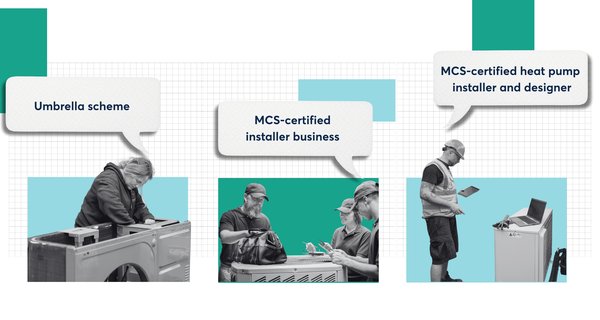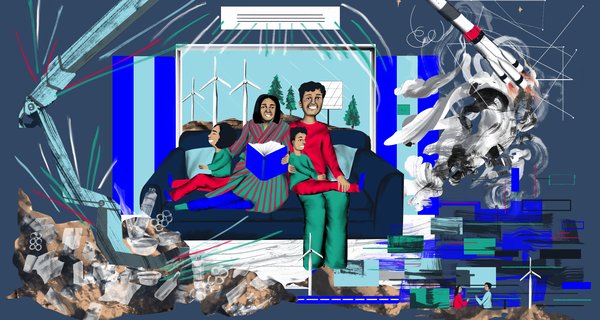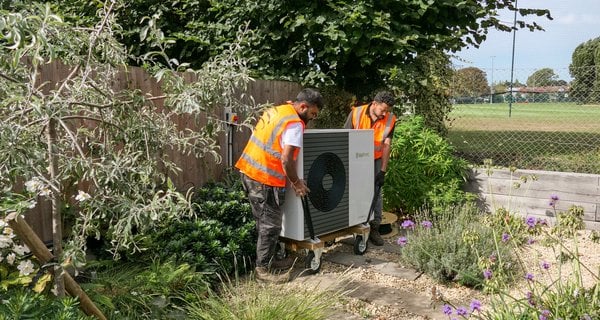Recommendations for communicating with households
Each stage of the three-part communication brought the idea of a clean heat neighbourhood closer – moving from abstract concept to personal invitation. The macro narrative (national messaging) sets the tone and values; the meso message (local council) gives the idea proximity and legitimacy; and the micro interaction (personal letter) brings it into contact with people’s real-world decisions. But sequencing alone isn’t enough. To build confidence and not just awareness, each stage must clearly show: What is this, how does it relate to me, what do I gain? People need to see tangible benefits and practical details that speak to the household level.
Based on the insights gathered, we have a stronger sense of what may help build confidence and engagement in the clean heat transition. The key takeaways from this phase suggest a set of actionable steps we could take forward as opportunities to test and refine our approach in response to what people told us.
1. Keep a gradual, layered communication approach
What we heard
People responded well to a phased build-up of information – from broad concepts to specific and personal details, compared to our previous testing. Interest increased as messaging became more tangible and locally relevant. But when introduced through the local council leaflet, some participants reflected that they would have expected to hear about something like this more – on the news, on social media or in everyday spaces like supermarkets or GPs. This revealed an expectation that this big change should show up more visibly in public life. While the framing didn’t explicitly lead with climate or health, people made those associations early on – suggesting that national-level messaging could build resonance by connecting to widely held values.
What this means
- Keep using a sequenced approach
- Ensure messages are clear, visible and resonate
- Use national messaging to tap into personal and shared values
2. Localise and personalise the experience
What we heard
Messages felt trustworthy coming from local sources (like councils), and became more relevant when tailored. But participants still weren’t always sure if the information applied to them personally.
What this means
- Strengthen local messaging with area-specific detail
- Tailor content by housing type or tenure
- Clearly state who it’s for to avoid self-exclusion
3. Provide detailed and actionable information early on
What we heard
People wanted more detail, especially around cost, timelines and what the change would involve. Some participants said they would take next steps – like scanning a QR code – but mainly because they still had a lot of questions. Others said they would expect more detailed information to come to them, rather than having to actively seek it out. Together, these signal a need to provide clearer, more proactive information earlier in the journey.
What this means
- Share practical info (costs, timelines, support) early
- Use proactive outreach, not just passive signposting
- Deliver information in simple, accessible formats (eg, videos)
4. Revisit cost messaging and make financing clear
What we learned
Cost was a central concern. People wanted clarity early on about what the transition would cost, what support exists, and whether it’s worth it in the long run.
What this means
- Be transparent about costs, funding, and benefits
- Show how group schemes or support can make it easier
- Connect value to both short-term affordability and long-term savings
5. Strengthen the connection to climate and community impact
What we learned
Some participants were motivated by climate, fairness, and future generations, even if practical concerns came first. These values made the clean heat neighbourhood idea feel more meaningful. Others saw practical upsides in doing this as a group, like shared costs or knowing others were also involved, without necessarily wanting to engage socially.
What this means
- Tap into both shared values and practical benefits of a coordinated approach, while still being clear on individual agency
- Highlight group advantages (like savings or coordination), without overstating social cohesion
- Show how individual actions contribute to collective change
- Use local stories to build trust and a sense of shared effort
How to build confidence with households
To bring together what we’ve heard across interviews and testing, the table summarises the key roles, expectations, actions and outcomes involved in building confidence through communication about a clean heat neighbourhood transition. It outlines how communication and engagement could evolve across three levels – national, local, household – with each scale playing a distinct role in shaping awareness, trust and readiness to act.
This synthesis is grounded in participants’ responses and our learning from the prototypes. It offers a practical framework to guide how and where different types of support and messaging could be most effective – from establishing national legitimacy, to reinforcing local credibility, to enabling personal relevance and action.
| Scale | Role in building confidence | What participants expected | Actions based on insights | Confidence outcomes |
|---|---|---|---|---|
| National |
Set the tone and legitimacy Make CHNs feel like a coordinated, positive national direction Speak to values and personal benefit |
To hear about CHNs through trusted channels (on TV, radio, social media) To see CHNs show up in more visible public spaces, like supermarkets or GPs To feel this was a normalised, expected part of national policy Messaging that says: “This is good for you – your home will be warmer, cheaper to run, and supported.” |
Use national campaigns and public touchpoints to raise visibility and credibility Emphasise shared goals (climate and future generations, energy fairness) alongside personal benefits (lower bills, comfort, support) Avoid overly technical framing – focus on vision, direction, and why this matters now |
Legitimacy and optimism “This is real, it’s coming, and it sounds like a good thing for households like mine” |
| Local |
Bring the message closer to home Make the idea tangible and specific Build trust through familiarity |
Clarity on: What this would cost them How switching would work in practice Specific eligibility – is this for me? Their expected level of commitment |
Use local comms to show more than just consultation – provide initial financial signals Tailor messaging by housing type, tenure, or retrofit suitability to avoid self-exclusion Provide area-specific examples to show feasibility Clearly state where the area sits in the process: “this is happening,” not “this might happen” Use plain language FAQs and drop-in sessions to address common fears or assumptions |
Recognition, credibility and personal relevance “I see how this might affect me, and I believe this is actually happening – not just being explored” |
| Household |
Make the transition real and personal Provide upfront clarity on cost, support, and process Show again that this is coordinated, not something they’re doing alone Offer depth, not just notification |
Clear comparison with current heating systems and financial scenarios Clarity on: – How much will this cost? Will there be grants or funding? – What if I can’t afford it? Can I opt out? – What are the payment options? Is there support beyond info? – People questioned: “Where’s the grant?” or said, “This is just a letter, we need more.” – They wanted to know what a “good outcome” would look like for their specific home and when this would be introduced |
Go beyond a single A4 letter: offer tailored information packs, example scenarios and case studies for different household types, visual tools and explainer videos Be transparent on cost: show funding offers, payment pathways Provide links to real-world examples: what installation might look like in a home like theirs, what help is available Include a clear timeline of when and how it will happen, and a contact point for further help Reinforce that this is a supported process, not a burden placed solely on the individual |
Clarity, control, and ease, with motivation to act “I understand what’s happening, I know what support is available, and I can take action without feeling overwhelmed” |





